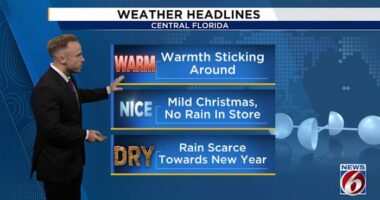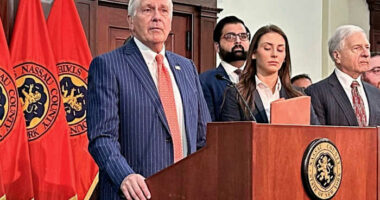Share this @internewscast.com

(NEXSTAR) – If you’re organizing plans for next weekend and the weather forecast on your phone looks grim, don’t worry too much. The projected high temperature might change considerably by the time the day arrives.
You might have experienced misjudgments by weather apps before, whether they overestimated the heat or underestimated the rain several days early. Jim Danner, a senior meteorologist at Nexstar, explained that such apps can be inaccurate for two principal reasons.
Firstly, the effectiveness of an app depends on the data it receives. Often, the models used to create those forecasts aren’t clear to the typical user, and the quality can greatly differ among apps. “Everybody wants to do a weather app now,” Danner said. “So if everyone is doing it differently, you’ll see different figures.”
The other problem, Danner explained, has to do with the uncertainty of predicting weather more than a few days out.
“When you start predicting weather seven days out or more, you’re really stretching the limits,” he mentioned. Danner, an iPhone owner, noted that in his experience, the standard Apple Weather app is fairly reliable for weather predictions three to five days in advance but tends to be less accurate beyond that time frame (as is the case with most forecasts).
For a more reliable forecast, Danner recommended consulting the National Weather Service or your local TV meteorologist. Meteorologists who reside and work in a specific area are familiar with which weather models are most precise for that region’s seasonal behavior, geography, and peculiarities.
“When a forecaster starts their shift, their primary task is to understand the current weather situation. This involves reviewing satellite images, surface data, precipitation reports, and receiving a briefing from other forecasters on duty,” described meteorologist Mark Bloomer in a post for the National Weather Service.
They combine data with their knowledge of the atmosphere to make predictions about what will happen later that day, tomorrow and beyond.
“Forecasters deal with many forecast models that are run several times a day and must decide which ones to rely on based on how well they seem to be handling current weather, how realistic their output is, and how consistent the forecast models are being from one run to the next,” Bloomer continued. “The forecaster may even decide that no model can be relied on at that time.”
“I would spend well over an hour putting together my forecast every morning,” Danner said, remembering when he worked as a local meteorologist in Texas. “These meteorologists make a living knowing their region. … So you get that human touch.”











